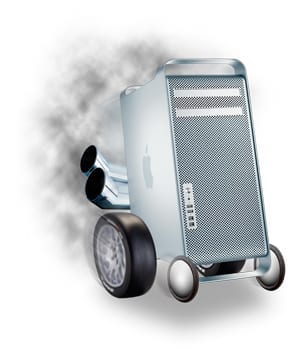 Last week OWC Larry posed the query – Why Wait For The New Mac Pro? and he touched a bit on the myriad of performance upgrades that are available.
Last week OWC Larry posed the query – Why Wait For The New Mac Pro? and he touched a bit on the myriad of performance upgrades that are available.
But why should you upgrade aging technology rather than saving up for the new shiny toy? Simple – It just makes good financial sense to buy the current units and upgrade (or even less just to upgrade your existing 2009-2010 Mac Pro). Pricing has yet to be announced on the new Mac Pro, but I tend to agree with many of the experts out there on this one – the entry level price is probably going to exceed the $2,500 entry-level price tag that Mac Pro owners have gotten used to from Apple. I’m actually expecting it to exceed the $3000 mark.
Add in the cost of adding external components for your storage as there are no internal upgrade bays for your existing data storage, and it’s a bargain to make your existing Mac Pro new again.
The fact remains that today’s Mac Pro models are still very viable workhorses in the professional computing arena. And they offer at least a few advantages over the new Mac Pro that will be released later this year – mainly in the immediate availability of upgrades including the OWC Mercury Accelsior PCIe SSD.
Simply put, an upgraded 2009 or 2010 Mac Pro is by far no slouch when it comes to computing speeds.
 Take for example Boot Time.
Take for example Boot Time.
A stock Mac Pro with a single 7200RPM drive takes roughly 1 minute 40 seconds to fully boot (give or take a few seconds depending on which model Mac Pro you have, which OS you’re booting to, and which items you have loading at startup). Add a single 3G SSD and that time drops to 55 seconds. Install an Accelsior PCIe SSD and watch that time drop by more than half again to a mere 24 seconds.
Ok, so that’s booting – what about actually using the machine?
Storage Performance
A similar progression in speeds can be found during usage too. Take, for example, Aperture and open 100 RAW 18-megapixel images and time how long it takes to complete the task. With the stock HDD our test took 69 seconds. With a 3G SSD only 41 seconds – but with the Accelsior PCIe SSD it took less than 20 seconds to complete.
Use Aperture then to create thumbnails out of those same files and on a 3G SSD you’re looking at 45 seconds to complete. Time drops to just under 30 seconds with an Accelsior installed.
As they say, seeing is believing, so if you’d like to watch that test – we filmed it:
But don’t just take our word or our testing on it: According to Leo Laporte of TWiT.tv, the Mercury Accelsior is “the single most important upgrade you can do” and he has no intention of ever removing it from his Mac Pro.
And Peter Cohen of iMore agrees, “Putting in an SSD offers your Mac Pro a new lease on life with a dramatic improvement in performance that will be an eye opener”
And that’s just by using single hard drives. Did you know that setting up certain RAID arrays can make them even faster? Take for example Lloyd Chambers of Mac Performance Guide setup a Striped RAID 0 of three OWC Mercury Accelsior PCIe SSDs and he reached speeds over 1800MB/s. That’s over 500MB/s faster than Thunderbolt is currently capable of. And as far as the new Mac Pro goes, the theoretical maximum speed of Thunderbolt 2.0 is 2560MB/s – and that’s only going to happen once Thunderbolt 2.0-equipped products are actually available in the marketplace.
Lloyd Chamber’s performance testing was done with products that are all available now. And that really is key when you’ve got a job to do.
RAM performance: Let’s take a look at performance and multitasking.
Our company mantra for years has been “More Memory = Faster Mac”. Adding more memory to your Mac Pro gradually boosts performance and allows you to run more processes and programs at once. Going from the stock 6GB to just 12GB of memory shows up to a 76% increase in performance and with 64GB of memory installed, ran the Photoshop action test five times faster than stock.
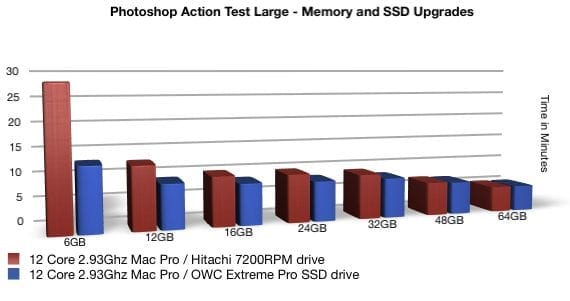
Want to see exactly how much added performance can be obtained by adding more memory? See our full memory benchmarking results.
Expansive Expandability:
With four PCIe slots, the world is your oyster on adding video capture cards, hard drive controller cards, FireWire or USB cards, Fibre Channel connections, Ethernet networking connections, etc. – each with their own throughput options for connecting all the peripherals you already have. And with the release of OS X 10.8.3 came some killer support options for compatible video cards on the Mac Pro as well.
For the majority of current Mac Pro owners, the bottleneck is not the GPU or the processor – it is the data storage performance and the amount of memory installed. Upgrading to an OWC SSD, or far better – an OWC Accelsior_E2 SSD plus upgrading memory to a level to eliminate live app memory page swaps (when the OS swaps from your installed RAM/memory to attached storage) – you won’t believe it’s even the same Mac Pro.
We’re excited as anyone to get our hands on the new Mac Pro to really see what they’re capable of and when the new Mac Pro models do come out, you better believe the OWC Test Lab will be hard at work getting all the numbers you care about. What does more memory do to that system? How fast is the read/write speeds of the internal storage? How do current Thunderbolt-equipped devices fare on a Thunderbolt 2.0 port? And how does it compare to previous models.
The thing is, with as slow as Thunderbolt-equipped devices have been hitting the market and with the limited customization options that the new Mac Pro offers – we’re just not as excited about this release as we have been in years past. But we’re still enamored with our current Mac Pros.
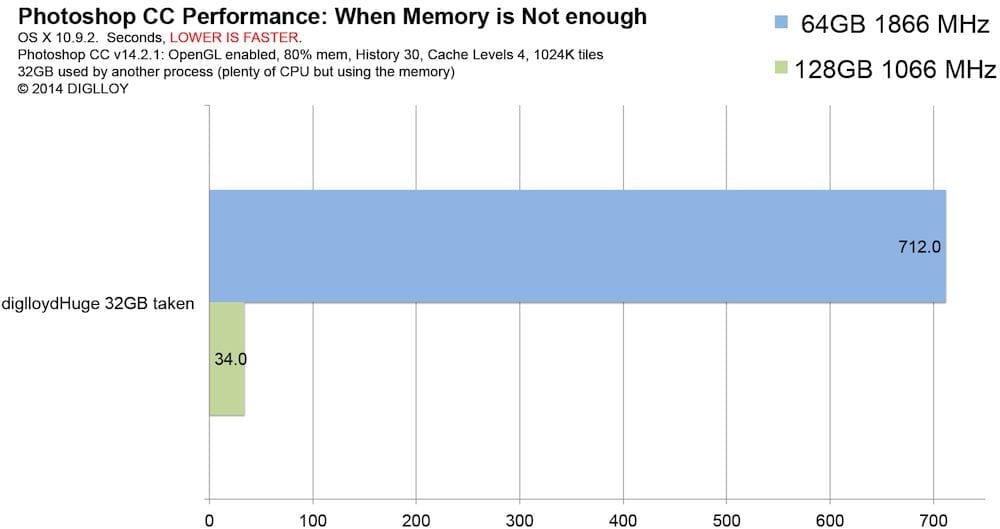

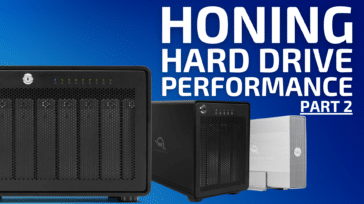
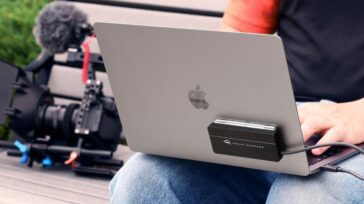
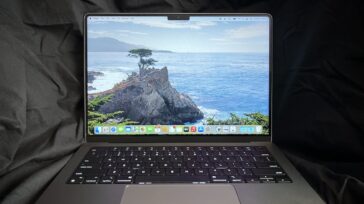
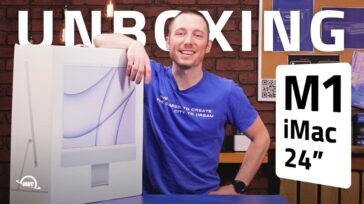


I have the opportunity to upgrade an Early 2009 MAC PRO Tower and or purchase a newer used MAC PRO trash can. At the moment I have little need for thunderbolt adaptability, USB 3.0 suffices my needs. So my question is, since this article was published nearly 3 years ago, what if any new mac/ computing advancements either support this article or undermine it. Are these upgrades still a wise option or have the years past somewhat rendered these obsolete? I’ve also heard that Apple might release the new Mac Pro this upcoming year. Any insight to waiting for that to happen so that the Mac Trash cans will lower in price? Looking forward to some professional insight. Thanks!!
Hi, Jay.
Here is another article you might find useful. With more memory, an SSD and better graphics performance, the 2009 Mac Pro can still be a powerful machine. For more information on what would best suit you personal workflow, please feel free to contact our helpful customer support team!
Luminar Min Requirements: I have an early 2009 and a 480 gig accelsior SSD as my boot drive. Does this make up for the older processor?
Processor Core 2 Duo from late 2009 or newer
Minimum 4 GB RAM
OS X 10.10.5 or newer
2 GB free space on hard drive
Display resolution 1280×800 or higher
Retina displays supported
hello guy here is my issue I want to build SSD raid with samsung 500 drives. but my late 2008 macpro does not have thunderbolt. Can i get a thunderblot pci card?
Hi, Alex. Unfortunately, there are no PCIe cards that can add a thunderbolt port to earlier Mac Pros. Thunderbolt is only available if the Mac has Thunderbolt ports factory installed.
What year would a mac pro have to be in order to have this functionality?
Hello There,
I have an issue of having to use an AUDIO INTERFACE (Apollo 16 from Universal Audio). I order to have this device working properly I need a thunderbolt conection, but my mac is 1.1 Mac Pro, is there a PCI Thunderbolt that can be purchased and installed on my Mac Pro 1.1??
Many Thanks
Hi Fernando, there are no PCIe cards that can add a thunderbolt port to the earlier Mac Pros. Thunderbolt is only available if the Mac has Thunderbolt ports factory installed.
Is there a PCIe thunderbolt for my Mac Pro 2008?
Hello Haris,
At this time, there are no PCIe cards that can add a thunderbolt port to the earlier MacPros. Thunderbolt can only be used if the Mac has Thunderbolt ports factory installed.
Hello,
I installed an Accelsior PCIe in a 2006 MacPro 1.1, installed a fresh Lion OS, and the patch available on your site.
But the MacPro doesn’t reboot. Only shut down and manually boot. In case of reboot (via the Apple menu, or automatically because of an update, il have to force the shutdown via the start button)
I heard that it’s because the system cut the alimentation of the PCI cards too quickly.
What could be the solution?
I’m sorry to hear about the issues. I would try both a SMC and a PRAM reset.
SMC reset: http://support.apple.com/en-us/ht3964
And
PRAM Reset:
1) Start the machine while holding down the Option-Command-P-R keys
2) Wait until you hear the 3rd startup chime, then let go of the keys and let the machine boot up.
If you continue to experience issues please contact our tech support.
My Mac Pro is 2009 vintage and when I tried to upgrade to Mavericks I was advise that the hardware version was too old to support the new OSX? I checked around and I believe this is yet another ploy from Apple to keep folks buying new gear. I have quad Xeon processors and lots of RAM, and if I upgrade to SD primary disk how is that going to get me to Yosemite???
Hi Dan, according to Apple, your Mac Pro is compatible with the newest version OS X Yosemite.
is it worth buying a 2010 mac pro over a 2013 imac as they are about the same price now i am worried about the imac as if the screen goes cost me a lot to fix and upgrading it will be harder so been looking at the mac pros as its easier to upgrade but will a mac pro 2010 still hold its own today or would i be better off just biting the bullet and buy a 2014 imac have apple put a ssd in it ?
It can be argued both ways. We’ve touched on this subject before and shown how an older 2010 Mac Pro can compete with the 2013 Mac Pro.
We have some great deals on used Mac Pros you can check out as well.
Both computers are stellar in performance. The best advice is to consider what you plan on doing with the computer over the course of how ever long you plan to keep the computer.
If you’ll be doing professional level work with the computer, check in with other professionals in the field to get their opinion. Macperformanceguide.com is a great resource to check out for performance comparisons and articles.
Which ever computer you decide on we will be here to help support it and make it even better!
Hi Mark,
Last year I decided against the new, cylindrical Mac Pro in favor of a refurb’d 2010 Mac Pro which I would upgrade myself. Essentially, I did what OWC Ben wrote about up ^ there. Man, it was *so* worth it.
The machine is a 2010 with 3.33ghz, 6-core Westmere and I immediately put 32GB RAM into it, that has made a world of difference! I’m a musician & producer and edit in Logic Pro and Pro Tools every day so I wanted to make sure it could handle the big, complicated projects I’m getting.
Second upgrade: I decided the system drive should be a Mercury Accelsior E2 PCIe SSD. What better drive from which to run heavy duty programs like Logic, Premiere Pro, Autodesk? I also decided to buy a Mercury Extreme Pro 6G SSD to use as the primary (first of 4) HD for internal storage of music data and 3rd party “sample libraries”. So bays 2, 3 & 4 have WD black 7200, 6gb/s, 4TB hard drives.
Second upgrade bonus: The Mercury Accelsior E2 has two e-sata porter. Whoever decided that would be a nice thing to add should receive the Nobel prize for understatement. Two older external HD docks I already own have e-sata ports I never used. No more, now they’re proud contributors to making my workflow really flow.
Third & final upgrade: added a Sonnet Allegro USB 3.0 PCIe card upgrade and a USB 3.0 HD enclosure to house the many other loose SATA HDs I keep active. For a momentI thought USB 3 and e-data would be redundant but a colleague convinced me otherwise.
All of the above has given me a machine which is a monster! And it all came to $400 less than a base, bare bones 2013 Mac Pro.
Even though your post is almost 2 years old, I hope you had – or are still hoping to have – a similar, positive experience going the DIY-lite route with any kind of Mac.
Russell
…oops, Mark’s orig comment is less than a year ago, not 2 years. Mark, either way…best of luck!
Does anyone know if you can still OverClock the 2008 CPU? This tool is a bit old now:
http://www.zdnet.de/39192217/exclusive-zdnet-overclocking-tool-enhances-performance-of-mac-pro/
I gave it a show and it immediately said is was incompatible with my machine, though I fit the criteria.
OC’ing a computer is a risk – it may work perfectly – for a time – it may die on the vine, never to return. While your post is a bit old, I would guess it is less risky to buy a faster CPU for your machine … or maybe sell what you have and get a newer machine. The ’09s aint bad and the ’10s are even better. Single CPU Mac Pros are not super expensive and I’m sure they will have a few years of life left in them.
How can I tell the manufacturing date of my MacBook Pro? I can’t find the receipt.
Model Name: MacBook Pro
Model Identifier: MacBookPro3,1
Processor Name: Intel Core 2 Duo
Processor Speed: 2.2 GHz
Number Of Processors: 1
Total Number Of Cores: 2
L2 Cache: 4 MB
Memory: 2 GB
Bus Speed: 800 MHz
Boot ROM Version: MBP31.0070.B07
SMC Version (system): 1.16f11
Serial Number (system): W87300xxxxxxx
Hardware UUID: 00000000-0000-1000-8000-001B6396D149
Sudden Motion Sensor:
State: Enabled
See http://www.everymac.com/systems/apple/macbook_pro/specs/macbook-pro-core-2-duo-2.2-15-santa-rosa-specs.html
Apple MacBook Pro “Core 2 Duo” 2.2 15″ (SR) Specs
Identifiers: Mid/Late 2007, 2.4/2.2GHz* – MA895LL – MacBookPro3,1 – A1226 – 2136
Thanks for all the info Klaus and Michael, but I have no idea if you’re referring to my 2007 or the other blogger’s 2008. What advantage would it be to install the OWC Memory 1.0GB 2 x 512MB PC5300 DDR2 Mfr P/N: 53DR2SPAIR1G OWC SKU: OWC53DR2SPAIR1G when my specs say I have a 2G memory. Working mostly at publishing houses there was always a tech guy available and, for my own computers (Free Lancing), there were Mac User Group “Geeks” to advise me. I mostly did install my own cards and upgrades. . .many from OWC. Otherwise, I am basically Tech Illiterate. As for a new machine, If I can get this antique to work faster, I will replace my iMac with the next generation.
FYI, I am 74 and as a Graphic Artist, I have used Macs since they first introduced Mac Write and Mac Draw. My first Mac purchase was a new SE 30 which I had factory upgraded from 8meg to 16meg. I used this Mac for business accounting (with a Zip drive, added memory and cards (OWC), and monitor replacements) until they introduced the PowerBook I purchased from OWC. I did have other Mac towers for QuarkXpress, Freehand, Illustrator, etc.
Use the serial number go here seems the obvious choice ..
https://selfsolve.apple.com/agreementWarrantyDynamic.do
What can I do to speed up my old MacBook Pro?
Hardware Overview:
Model Name: MacBook Pro
Model Identifier: MacBookPro3,1
Processor Name: Intel Core 2 Duo
Processor Speed: 2.2 GHz
Number Of Processors: 1
Total Number Of Cores: 2
L2 Cache: 4 MB
Memory: 2 GB
Bus Speed: 800 MHz
Boot ROM Version: MBP31.0070.B07
SMC Version (system): 1.16f11
Adding memory is one of the easiest and most cost-effective ways to speed up your MacBook. Your model is certified for up to 6GB of memory. OWC SSDs are also a great way to give your machine a performance boost.
The major problem with the 2008-2012 Mac Pros is they have only 4 PCIe slots, and the available Accelsior cards from OWC are limited to x2 lanes. Even in a tricked out 2012 Mac Pro, the 2 x16 slots are occupied by video cards, while the 2 x4 slots are occupied by Accelsiors. This is essentially the concept of the 2013 Mac Pro, which has x2 GPUs and a dual Accelsior-speed drive built in. But unlike the 2008-2012 Mac Pros, the 2013 Mac Pro has expansion with Thunderbolt to connect additional PCIe speed devices. If OWC made a x4 lane Accelsior or a x16 lane Accelsior, performance of a 2008-1012 Mac Pro would equal or exceed the 2013 Mac Pro while occupying only 1 PCI slot on the 2008-2012 Mac Pro.
4PCIe 2.0 slots are not bad. IIRC the ’08 Mac Pro tower only has two 2.0 PCIe slots and two PCIe 1.0 or 1.0a or something slots, though not bad, depending on what you want to do – not the best, since PCIe 3 has been out for some time now and PCIe 4 should be in in 6 to 18 months…
You may want to check this page out:
http://barefeats.com/hard210.html
My only concern on updating an “old” Mac Pro ie my 2008 model, which I am tempted to do, is Apple’s policy of excluding older machines from being able to install later versions of OSX and hence preventing me from using newer versions of the applications. I will then be pushed into using an iMac or a MacBook Pro with an external keyboard and screen and lots of Thunderbolt attached drives.
In the short run, you’ll be ok – Apple has already listed the 2008 Mac Pro as Mavericks compatible. But, please note that this article was written in reference to the 2009 and later models which have PCI 2.0 slots across the board. Your 2008 model has two PCI 1.0 and two PCI 2.o slots (one of which hosts your graphics card). The slower transfer rates and aging technology of PCI 1.0 is going to make that model incompatible with future operating systems sooner than the 2009-2012 models and many of the benchmarks provided in this article will not be achieved with the Mac Pro models released prior to 2009.
Does the above info/upgrades apply to a 2008 Mac Pro dual quad core Xeon 2.8 GHz (MacPro3,1)? This is what I have and I don’t think I can afford to purchase the new Mac Pro.
Thanks
To a certain extent, yes. The 2008 can still utilize many of these upgrades – however, the 2008 models have two 16-lane PCI Express 2.0 and two 4-lane PCI Express 1.1 slots (as opposed to all PCIe slots on the 2009-2010 models utilizing PCI Express 2.0). So installing the Accelsior_E2 into one of the two x4 PCIe 1.1 slots will result in Accelsior_E2 being addressed as a gen one, one-lane card with performance limited to real world 190-200MB/s data rates.
The memory is also a bit slower at 800MHz as opposed to the 1066MHz or 1333MHz of the later model Mac Pros. The benchmarks for that memory can be found here.
All in all, it may behoove you to upgrade a generation on that Mac Pro for better performance – and we do have some great deals going on some used machines right now.
Yes may be true. But that’s assuming you have no empty pcie 2 slots. Simply put the card in the 2.0 slot and get the faster speed right?